Learning my easy recipe for how to make buttermilk at home is an essential kitchen hack every baker should know! While this prized Southern ingredient is a feature in many recipes, chances are rare that you’ll have a carton on hand in the fridge. So, rather than cancel your baking plans, bookmark this easy homemade buttermilk recipe as a quick substitute for the store-bought kind!
Traditional buttermilk is a byproduct of churning butter– it’s the low-fat portion that is leftover after solids in cream form into a mass (butter!). Most store-bought buttermilk is cultured, making it thick and slightly acidic. You don’t need to churn your own butter to make this recipe, though! You only need two simple ingredients to make your own buttermilk substitute. Plus, it’s easy to scale up or down, so you can make as much as you need. For more helpful baking substitutes, try my cake flour substitute recipe, or learn how to make sour cream and how to make brown sugar!
2 Simple Ingredients
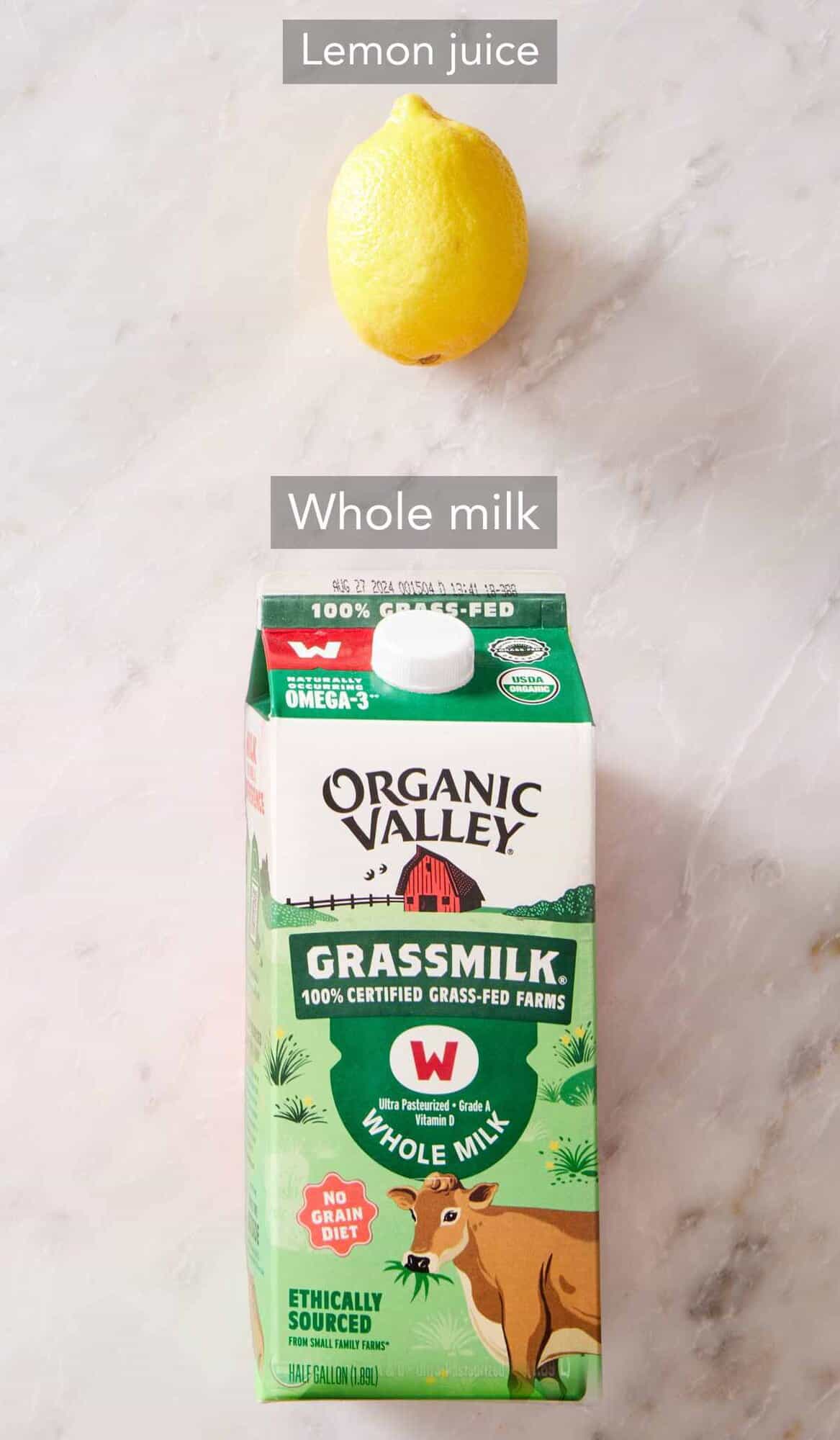
You only need two ingredients to make a buttermilk substitute! You can find the measurements and method in the recipe card below.
Whole milk — this richer milk produces the best buttermilk substitute consistency. Even though a lot of store-bought buttermilk is labeled as “low-fat,” whole milk creates a creamier texture, similar to store-bought, than skim milk or 1% or 2% milk does.
Lemon juice or white vinegar — adding an acid to the milk is what makes it curdle and thicken. These two options have a relatively neutral flavor profile and are easily accessible at any grocery store or in your home pantry.
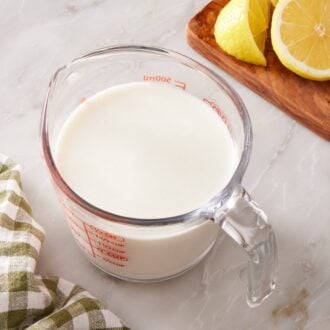
How To Make Buttermilk
Video
Equipment
- Liquid measuring cup or bowl
- Tablespoon measuring spoon
Ingredients
- 1 cup whole milk (240ml)
- 1 tablespoon lemon juice or white vinegar
Instructions
- In a liquid measuring cup, combine the milk and lemon juice or distilled white vinegar.
- Stir together and let sit for 5 to 10 minutes. Use immediately.
Notes
- For a richer, thicker buttermilk, use half and half instead of whole milk. This is a great option if using the buttermilk for a frying dredge or salad dressings. I recommend sticking with whole milk if using it in baking recipes.
- You can use a variety of different acids. If you don’t have white vinegar or lemon juice, you can use another neutral-flavored vinegar, like apple cider vinegar or lime juice.
Nutrition
How To Make Buttermilk
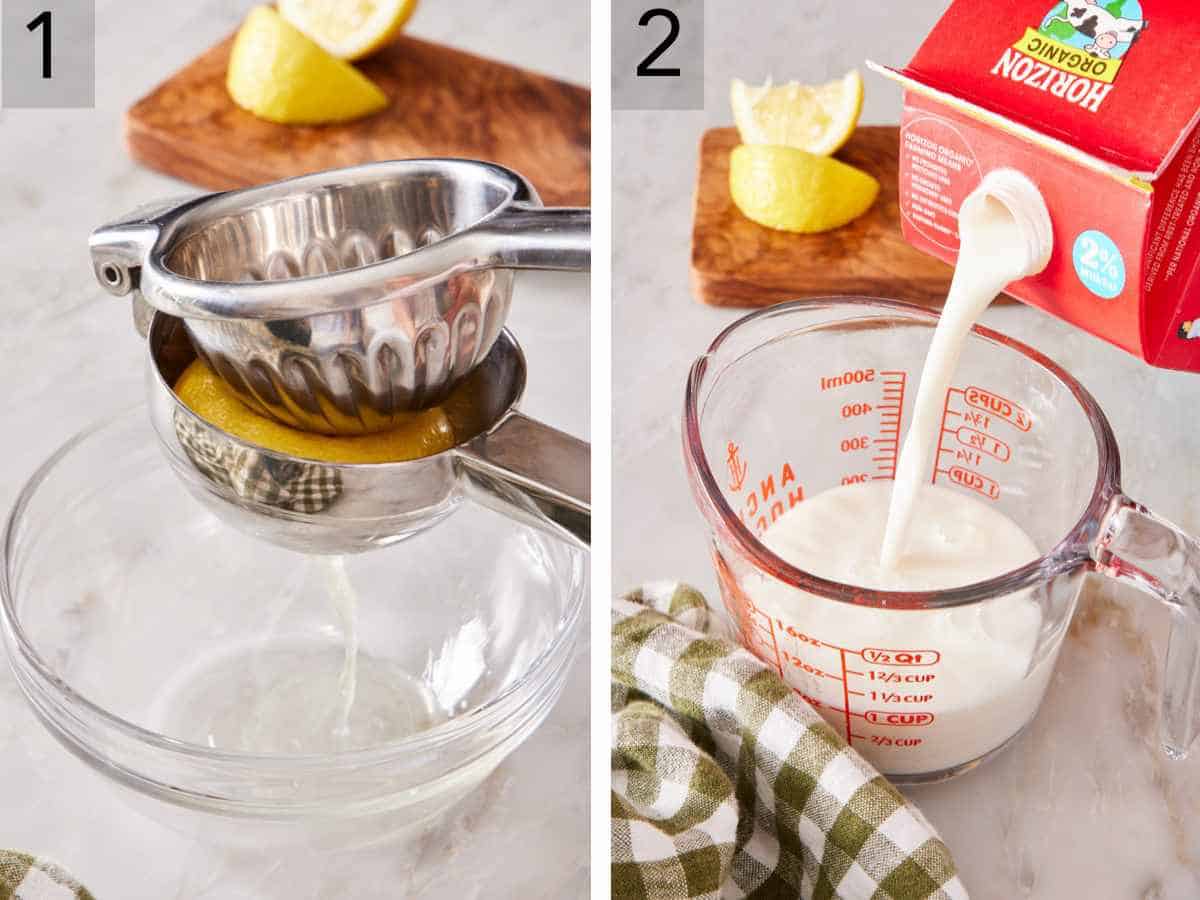
1. Squeeze the juice from a fresh lemon.
2. Pour the milk into a liquid measuring cup in your desired amount.
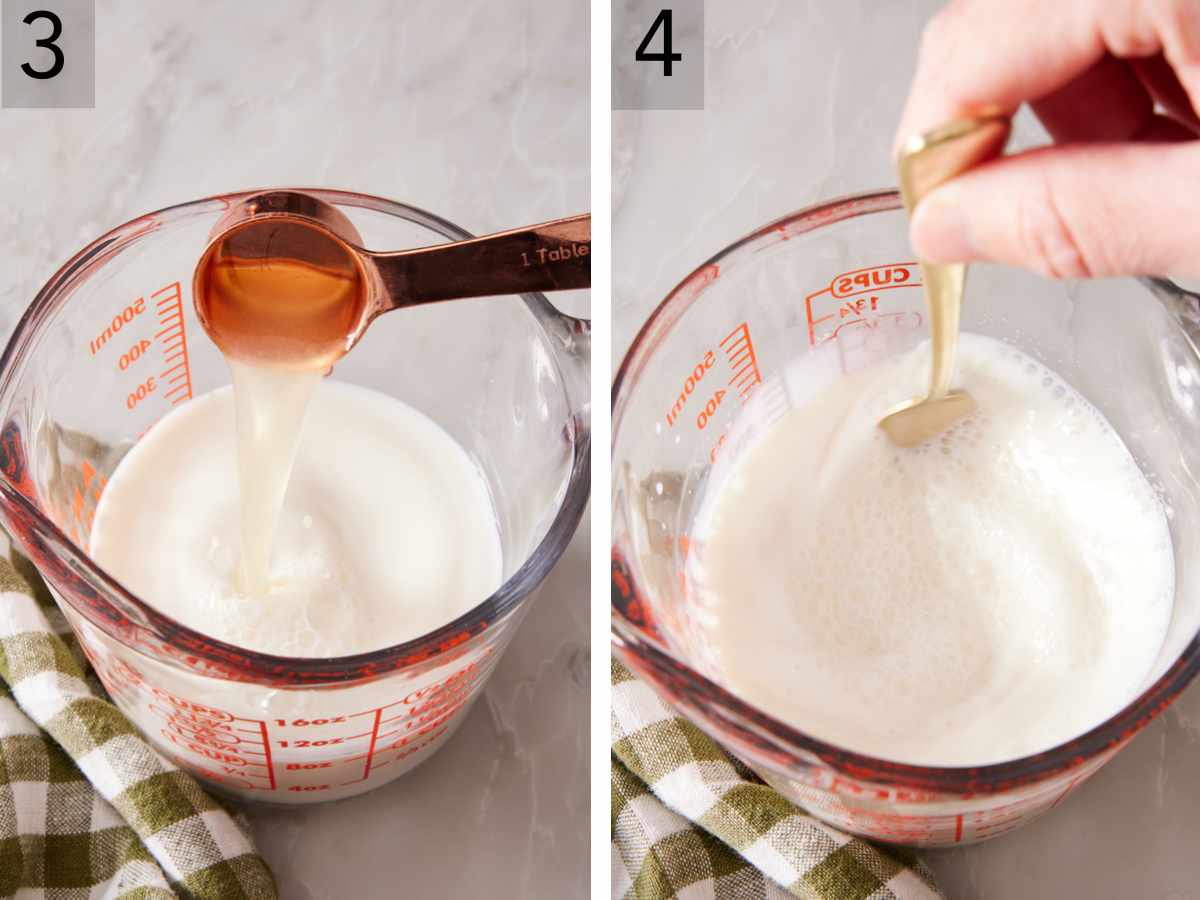
3. Measure the lemon juice and add it to the milk.
4. Stir the mixture together and let sit for 5 to 10 minutes to thicken. Use immediately.
What Is The Ratio Of Milk And Vinegar To Make Buttermilk?
Generally speaking, you need 1 tablespoon of vinegar for 1 cup of milk. A tablespoon is equivalent to 3 teaspoons, so you can do a little math to make more or less if needed! Here are some helpful conversions to keep in mind:
- ¼ cup buttermilk = ¼ cup milk and ¾ teaspoon of vinegar or lemon juice
- ⅓ cup buttermilk = ⅓ cup milk and 1 teaspoon of vinegar or lemon juice.
- ½ cup buttermilk = ½ cup milk and 1 ½ teaspoons vinegar or lemon juice.
Keep in mind that while this buttermilk substitute is an excellent replacement for store-bought cartons, it will be a bit thinner than the real thing. You may need a little bit less for certain recipes that are sensitive to moisture levels, like biscuits, pancakes, or waffles.
Can I Use Plain Milk Instead Of Making Buttermilk?
Precision is key when baking, so you should generally try to use whatever ingredient is called for in a recipe or replace it with an acceptable substitute.
Store-bought buttermilk is typically cultured, which means it is acidified. While the tangy flavor is definitely a plus for some recipes, there’s likely a technical reason for using buttermilk, too. If a recipe calls for buttermilk, it is likely relying on the acidic pH to activate a leavening agent (like baking soda), and/or the acidity is key for creating a soft crumb or for tenderization.
If you opt for plain milk, you may get less rise or a different texture in the finished recipe. But now that you know how to make buttermilk using milk and lemon juice, you should always be able to get the results you’re looking for!
How To Tell When The Buttermilk Substitute Is Ready To Use
Regular milk is creamy, but it’s considerably thinner than buttermilk. See in the image below how the acid thickens and creates curds in the milk? That’s a clear indication that it is ready to use. While the curdling may start happening immediately, stirring the two together and letting the mixture sit for 5-10 minutes ensures you’re giving enough time for the reaction to happen on a wider scale and create the right consistency.
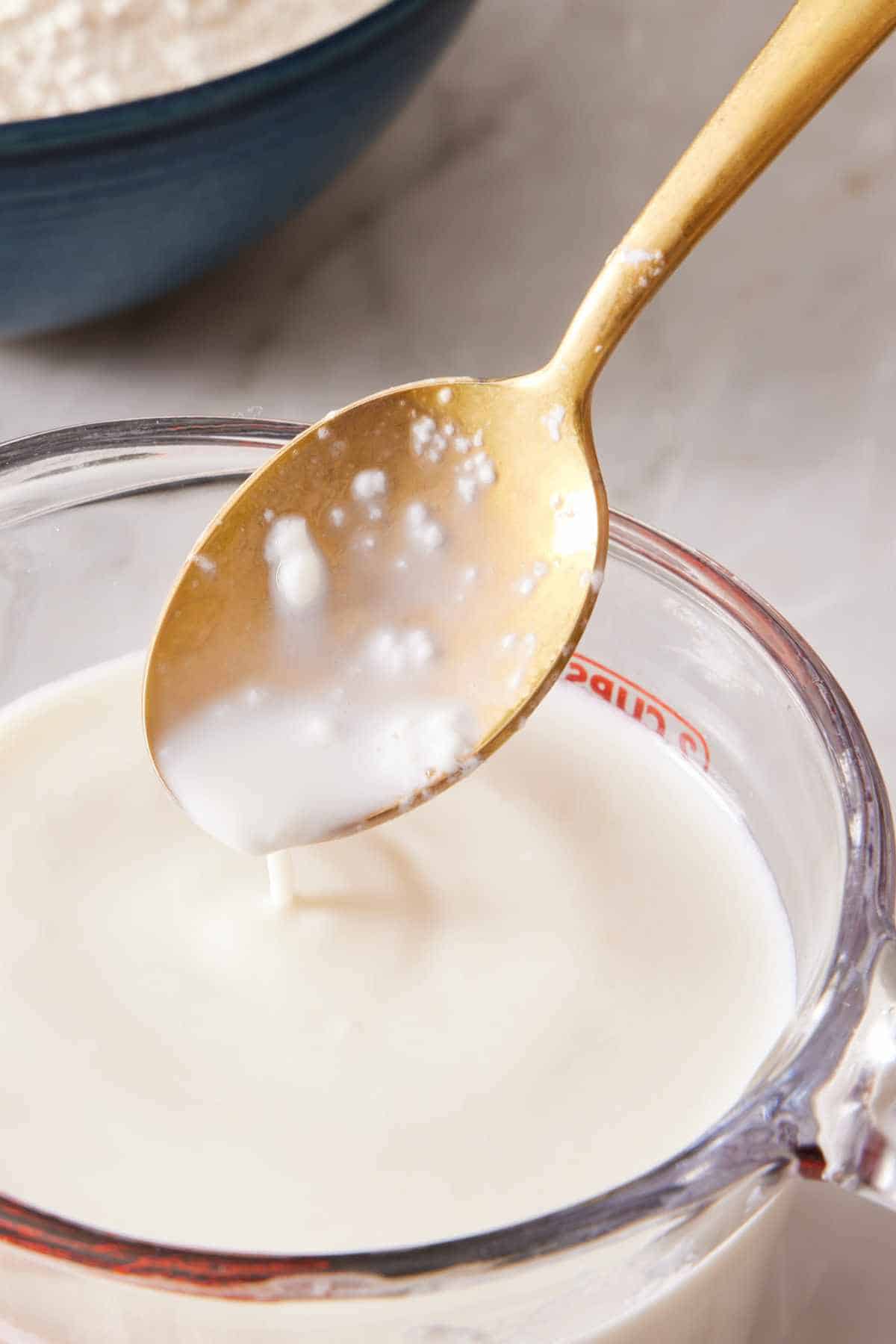
Other Buttermilk Substitutes
Aside from mixing milk and a liquid acid, there are several other good buttermilk substitutes you can try stirring together, including:
- 1 cup milk + 2 teaspoons cream of tartar (a.k.a. tartaric acid)
- ½ cup sour cream + ½ cup water
- ¼ cup water + ¾ cup plain yogurt (not Greek or other thick yogurts)
- ¾ cup + 2 tablespoons plain unsweetened kefir + 2 tablespoons water
- ¾ cup + 2 tablespoons sour cream + 2 tablespoons water
- ¼ cup powdered buttermilk + 1 cup water
Can I Make A Dairy-Free Buttermilk Substitute?
Absolutely! Making a vegan buttermilk substitute is just as easy to make with a different type of milk. Simply swap in your favorite unsweetened plant-based milk. Note that the higher the protein in the non-dairy milk, the more viscous the results—that’s why I tend to prefer using soy milk. You’re also welcome to use lower-protein options like almond milk or oat milk, but you’ll likely need to let it sit for the full 10 minutes for the curdling to happen.
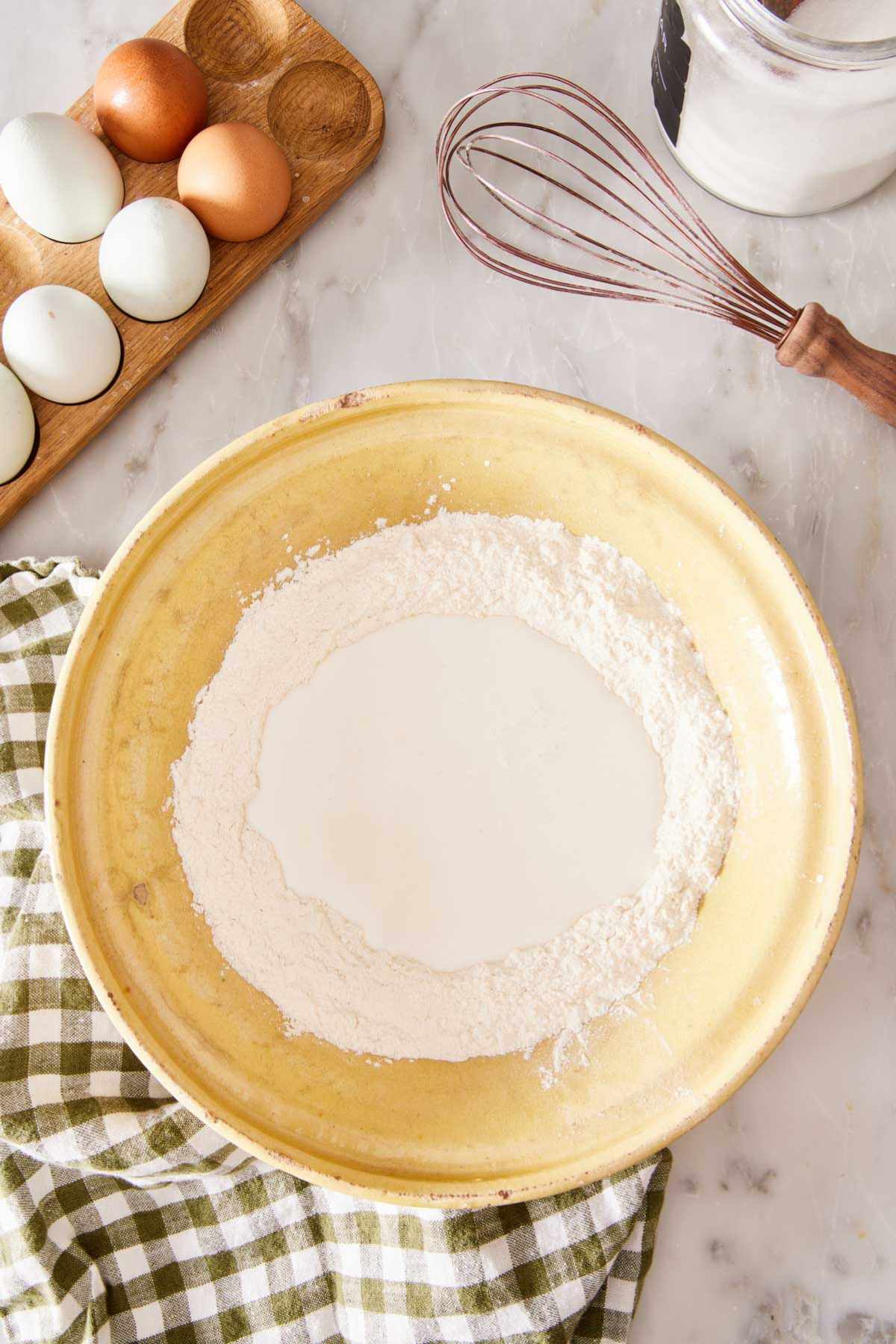
Ways To Use Homemade Buttermilk
Once you know how to make your own buttermilk, you can make any of these recipes at any time! Some classic applications include buttermilk biscuits (for strawberry shortcakes?!), buttermilk pancakes, and buttermilk pie. It’s also great for use in cake recipes like my vanilla cake, chocolate cupcakes, and vibrant red velvet cake.
That said, don’t feel limited! I like to use buttermilk in my Irish soda bread recipe, and it’s an ingredient in savory recipes like fluffy hush puppies or spicy chicken sandwiches. For a recipe like classic fried chicken, buttermilk is used to both tenderize the chicken and as a way to help adhere to the dredge before frying.
Pro Tips For Making This Recipe
- If you need room temperature buttermilk, combine the milk and lemon juice, then microwave on high for 30 seconds. Let it sit for about 10 minutes. This is also a good way to kick off the acidulation process of the milk!
- Use the right tools. Be sure to mix your buttermilk substitute in a non-reactive container. Since acid is being added, you don’t want to use something like aluminum or copper. A glass measuring cup is ideal and easy since you’ll be measuring your milk volume to start.
- Don’t rush. The acidulation process takes a few minutes, so make sure to give yourself time to let the mixture curdle and thicken.
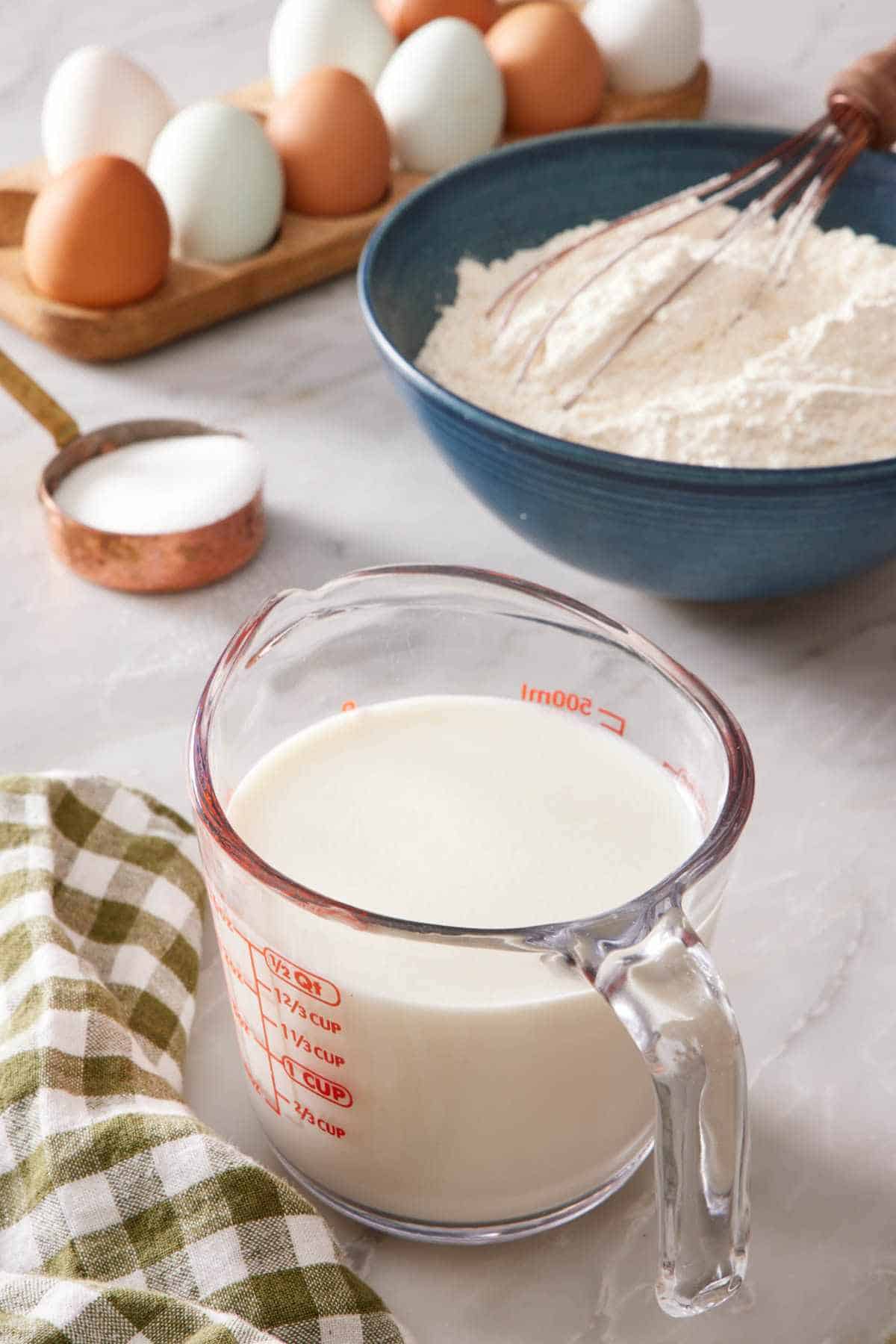
Frequently Asked Questions
I’d recommend you keep any leftovers in an airtight container in the fridge and use it within 24 hours for the best results. Note that the buttermilk substitute may continue to curdle and thicken as it sits, so stir it again before using it.
Sure thing! I like to measure it and freeze it into silicone ice cube trays or smaller containers for easy portioning—just make sure to transfer it to a freezer bag once frozen to prevent freezer burn. Allow it to defrost in the fridge overnight prior to using.
While you technically don’t have to, I recommend that you use whole milk for the best results. Actual buttermilk is made as a byproduct of butter-making, and the fat level can vary, but it’s typically considered low-fat. That said, the culturing process helps to thicken it, making it more along the lines of a pourable yogurt (e.g. kefir) from a textural standpoint. Since our homemade buttermilk doesn’t have the same cultures and we’re making it more quickly, using whole milk will give you a closer approximation to the consistency of real buttermilk.
If you’ve tried this Homemade Buttermilk recipe, then don’t forget to rate it and let me know how you got on in the comments below. I love hearing from you!



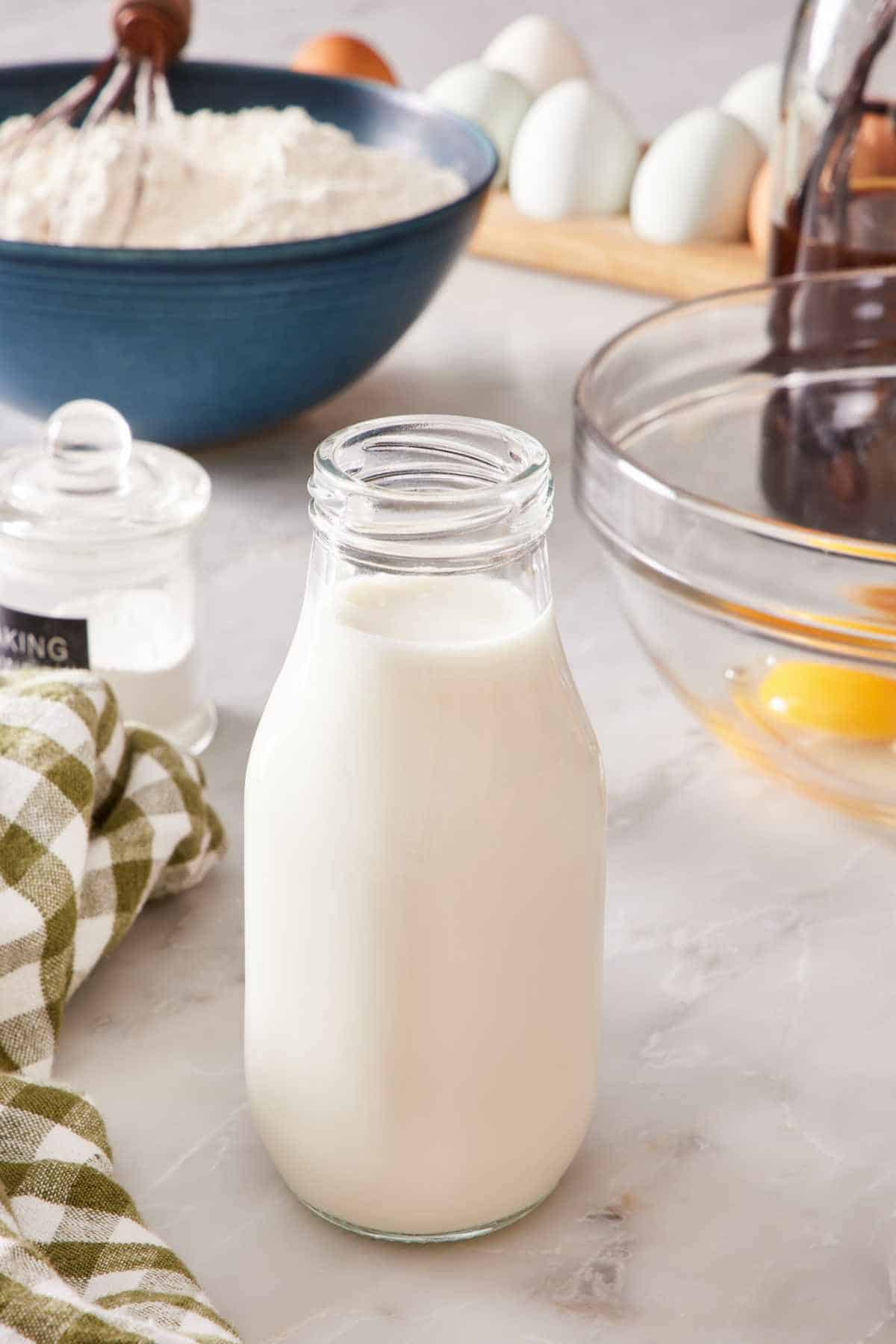

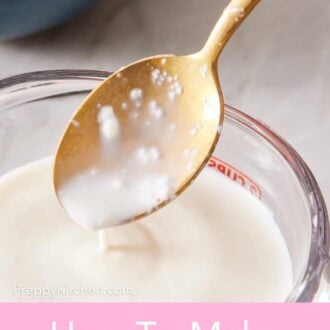
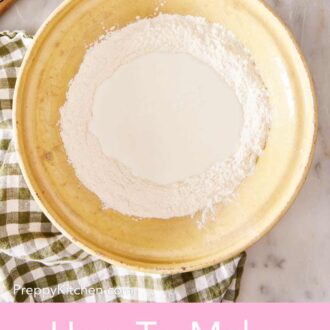

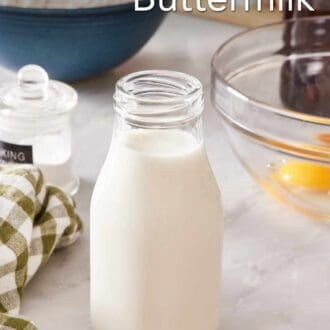
Natalie says
This recipe made my heart pounce because I really needed it. I recommend to use this recipe when baking anything especially cookies.
Musole says
This recipe is always a win for me it’s my go too, thank for sharing.
LLove from Zambia
Lily says
Worked very well. Smelled and tasted a lot like buttermilk. Used this to make buttermilk pancakes. Will make this instead of buying.
John Kanell says
Thank you!
Melona Liu says
thank you so much for the recipe.
JOSÉ RAMÓN JASPE says
AMAZING AND EASY!!!
Matney says
I used to use the Better Homes recipe for pancakes and loved it, but these are on a different level!!!! These are the fluffiest most delightful pancakes ever! Thank you for another winner recipe!
Julie Menghini says
I knew about the milk version but not the yogurt or sour cream! Thanks for a great post!
Carol Prior says
Love all of your recipes. My husband and I are really happy that we found you on U-Tube
Nina Tobias says
Hi John,
Thank you for these helpful suggestions regarding buttermilk. I’m writing to ask if you have any opinion about the powders. Saco brand is readily available at my local grocery but I’ve been reluctant to try using without getting an opinion from an expert baker – that would be you!
Wishing you and your family much happiness in your new home,
Nina
jkanell says
I used to use the powders and they were fine!